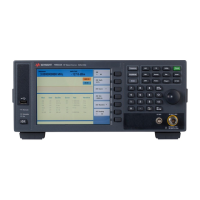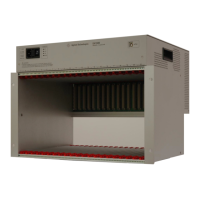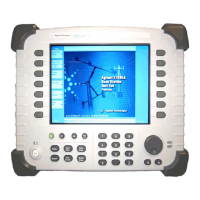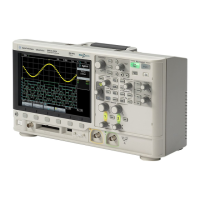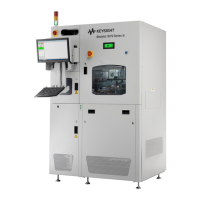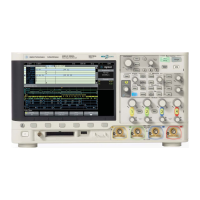4 Triggering
112 InfiniiVision 7000B Series Oscilloscopes User’s Guide
Trigger Types
The oscilloscope lets you synchronize the display to the actions of the
device under test by defining a trigger condition. You can use any input
channel or the External Trigger Input BNC as the source for most trigger
types.
The following trigger types are described in this chapter:
• Duration Trigger 114
• Edge Trigger 117
• Glitch or Narrow Pulse Capture 119
• Nth Edge Burst Trigger 123
• Pattern Trigger 125
• Pulse Width Trigger 128
• Sequence Trigger 131
• TV Trigger 138
• USB Trigger 150
Changes to the trigger specification are applied when you make them. If
the oscilloscope is stopped when you change a trigger specification, the
oscilloscope will use the new specification when you press [Run/Stop] or
[Single]. If the oscilloscope is running when you change a triggering
specification, it uses the new trigger definition when it starts the next
acquisition.
See Also • “CAN Triggering” on page 264 if you have Option AMS (N5424A).
• “FlexRay Triggering” on page 315 if you have Option FLX (N5432C).
• “I2C Triggering” on page 284 if you have Option LSS (N5423A).
• “I2S Triggering” on page 306 if you have Option SND (N5468A).
MegaZoom Technology Simplifies Triggering
With the built-in MegaZoom technology, you can simply AutoScale the waveforms, then
stop the oscilloscope to capture a waveform. You can then pan and zoom through the data
using the Horizontal and Vertical knobs to find a stable trigger point. AutoScale often
produces a triggered display.
